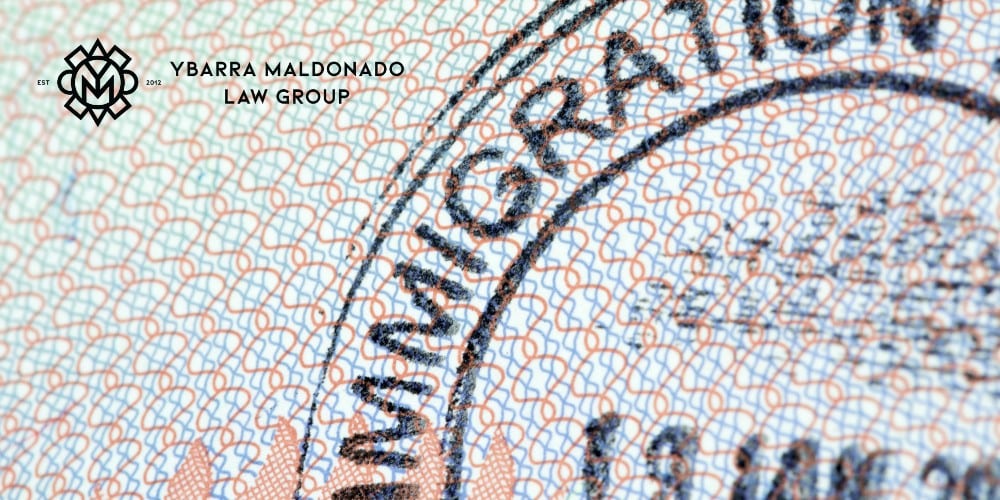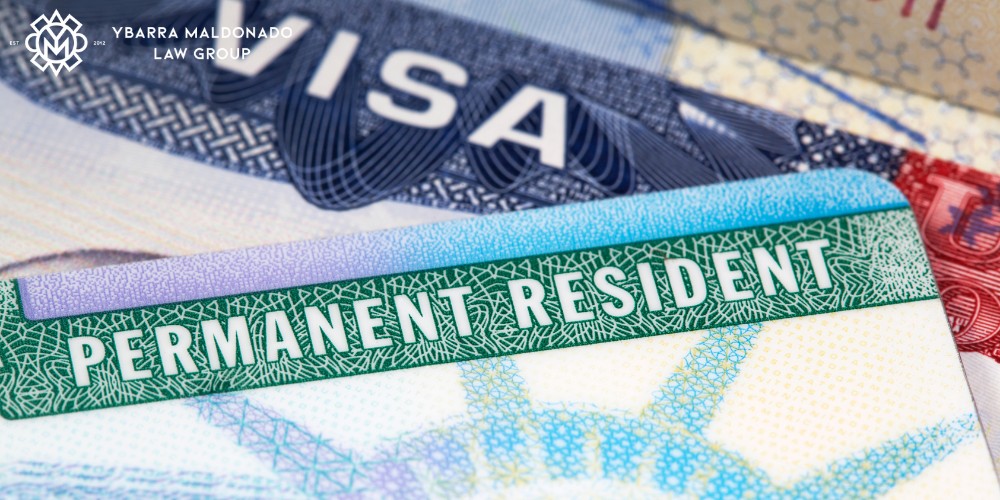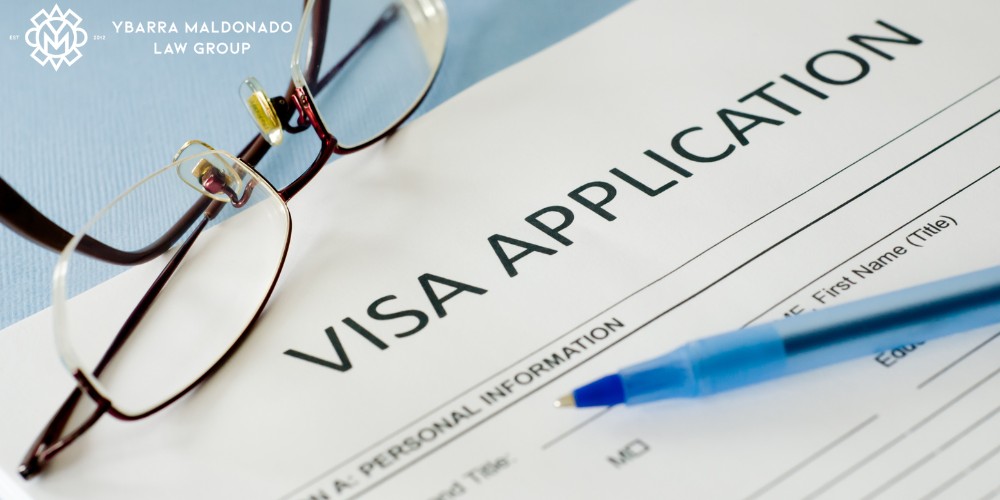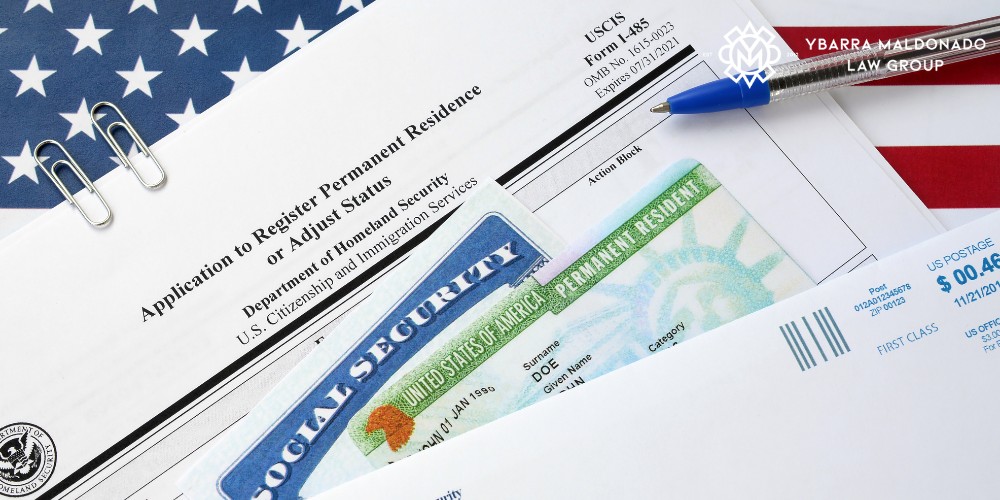L1 VISA TO GREEN CARD PROCESS
Home » Practice Areas » Phoenix Immigration Lawyer » L1 Visa to Green Card Process
DON’T HESITATE TO REACH OUT TO US!
Our Law Firm is committed to becoming the best Law Firm for Latino, migrant, and Spanish speaking communities in Arizona.
Phoenix L1 Visa to Green Card Attorney

There is a strong similarity between L1 visas and employment-based visas (EB1, EB2, and EB3). For example, the EB-1c visa is for multinational executives and managers. Beneficiaries of the EB-1C visa must have qualifications similar to those of L-1A applicants. In this post, we’ll discuss these types of visas and how they can lead to permanent residency for foreign nationals. Our Phoenix immigration attorneys can also help with an EB2 to EB3 downgrade if necessary.
What Is an L1 Visa?
An L1 visa is a document that allows a holder to enter the United States to work. It is a non-immigrant visa. This means it is only valid for a relatively short period of time. The amount of time it grants non-immigrants depends on where they come from. For Iran nationals, L1 visas tend to be around three months. For India, Japan, and Germany nationals, the period might range up to five years. It is based on reciprocity. L1 Visa holders may file for extensions that may grant them a maximum of seven years.
You may not apply for an L1 visa yourself. The United States company must file L1 visa petitions on the employee’s behalf. The United States company is considered the petitioner. The L1 visa recipient is the beneficiary.
What Are the Types of L1 Visas?
Within the group of L1 visas, there are specific types you can apply for.
- L1a visas are for executives and managers. They are valid for up to seven years.
- L1b visas are for workers with specialized knowledge and talent. They are valid for up to five years.
Can L1 Visa Be Converted to Green Card?

Both types of L1 visas are dual intent visas. This means beneficiaries can apply for a Green Card after obtaining an L1 visa.
What Is the L1A Visa to Green Card Process?
In addition to the two types of L1 visas, there are two procedures associated with L1 visas:
- Regular L1 visas. These must be applied for and approved for each individual by USCIS.
- Blanket L1 visas. These are available to employers that meet specific requirements.
The company must have an office in the US. It must have been in business for at least one year.
It must have at least three domestic and foreign branches, affiliates, or subsidiaries.
In addition, it must meet one of the following three criteria:
- The company must have already obtained 10 or more L1 visas in the past year
- It has sales of at least $25 million
- Employ at least 1,000 employees in the US
In some cases, additional time beyond the five or seven-year cap may be granted. This is for beneficiaries that reside abroad and commute to the United States for work. Beneficiaries who work seasonally or intermittently may also be eligible for longer-term visas. For this, the total time spent in the United States for work must be a total of six months or less per year. Applications must include extensive evidence of travel and time spent in the United States.
L1A Visa to Green Card Timeline
Generally, the time it takes to go from an L1A visa to a Green Card is anywhere from 6 to 24 months. However, this varies significantly depending on processing times.
L1A to Green Card Processing Time
Processing times can vary depending on individual circumstances, but L1A to green card processing times range from six months to a year.
L1A to Green Card Success Rate
The success rate of changing from an L-1A visa to a Green card is very high, with an average success rate of 80%.
How Do You Know If You Have L1 Visa Eligibility?

Employers may file for L1 visas for individuals that worked full-time continuously for one year in the past three years before filing. The individual must have a managerial or executive position (L1a), or provide specialized skills or knowledge (L1b).
The position must be full-time. This means at least 35 hours per week. The only exception to the full time requirement is if the beneficiary works for multiple affiliated companies.
“Specialized skills or knowledge” means that an individual understands the company’s product, techniques, research, service, or equipment that makes him or her irreplaceable to the company’s dealings in the United States. It does not mean simply experience in the field.
Can Family Members of L1 Visa Holders Get US Visas?
Children of L1 visa holders may attend United States schools. If you are a spouse of an L1 visa holder, you may also work in the United States without restriction after being granted a Form I-766 employment authorization document (EAD). The type of visa you would require is an L2 visa.
What Is an EB1 Visa?
The EB1 visa is an employment-based permanent residency. Permanent residency is also known as a Green Card. It is granted to foreign nationals with extraordinary abilities, outstanding professors or researchers, as well as some executives and managers of foreign companies that transfer to the United States.
There are three main types of EB Visas:
- Eb1, first preference. These types of workers get first priority in the application process. They are foreign nationals with extraordinary abilities in the sciences, arts, business, education, or athletics. It also includes multinational managers and executives
- Eb2, second preference. This includes foreign nationals with advanced degrees or exceptional abilities.
- Eb3, third preference. This type of visa is granted to skilled workers, professionals, and other workers.
Those that hold an L1 visa may be eligible for an EB visa. This means they can get a green card, which grants permanent residence.
L1 Visa to Green Card Through EB-1C
While it may be a bit complicated, it is possible to transition from an L1 visa to a green card by applying for permanent residence status first. Once your permanent residence status has been obtained, you may then apply for a green card.
Requirements for EB-1C
As a manager of a multinational company, you will need to file for an employment Green Card under the EB-1C category. In order to be considered for the EB-1C category, you must;
- Have been employed as a manager or executive in a foreign company or organization outside the United States.
- Must have worked for the foreign employer for at least a year in the three years prior to filing your petition.
- You came over to the U.S. on a transfer within the same company or as an affiliate or subsidiary in a managerial or executive position.
- Your employer in the U.S. has been in business for at least one year as an affiliate, a subsidiary, in the same company or organization that employed you abroad.
- There needs to be a qualifying relationship, such as common ownership or control between the U.S. and overseas companies.
Application Process
The application process is pretty straight to the point, as there are only two sets of forms that you are required to submit:
- An immigration petition
- Green card application
Immigration Petition
In order to get the EB-1C visa, your employer must sign Form I-140, a petition for the nonimmigrant worker. You must have an approved immigrant petition before you can file Form I-485, according to the procedure.
Green Card Application
Form I-485 is your claim to seek an adjustment of status and permanent residence. Once your Form I-485 is received, USCIS will call you to register your biometric information, including your fingerprints, photo, and signature. This information will be used for conducting mandatory background checks and verifying your identity. This will also declare whether you need an interview or not for adjustment of status. Following that, you will be summoned to the primary office of the USCIS to verify the copy of the documents you submitted.
You can expect a notice from the USCIS later indicating their decision about your application. If the answer is yes, you will receive your green card shortly after receiving the notice. If your application is denied, your notice will indicate the reasons why your application is denied. You can try getting the green card again by filing a motion for reconsideration.
L1 Visa to Green Card Through EB-2C
This type of visa may also be known as the intra-company transfer visa because it is a nonimmigrant visa that allows foreign national employees of international companies with U.S. branches to live and work for the United States. Those that are eligible for a green card through an L-1B visa typically fall under the following categories:
- EB2 Category- Advanced degree
- EB2 Category- Skilled or professional workers
Requirements for EB-2C
Prior to submitting the immigration petition, your employer must have a labor certification that has been approved by the US Department of Labor (DOL). The DOL labor certification declares two things;
- There is a need for more available, qualified and willing workers in the U.S. labor market to fill the requirements at the existing wage.
- The wages and working conditions of the company’s U.S. counterparts will not be adversely affected by hiring a foreign national.
Application Process
To initiate the transition process, your sponsoring employer must have hands-on PERM Labor Certification. This requires the employer to confirm that your pay will be the prevailing wage rate and declare that there are no U.S. citizens or U.S. permanent residents available to fill the work requirement.
Your sponsor will raise the I-140 petition for you later in the process, depending on when your priority date is becoming current. Your priority date will be considered by the USCIS when they receive your petition. You will need to keep an eye on the U.S. visa bulletins in order to know when the priority date has become current.
The entire process normally takes about 8 months, including 30 days of job order requirement, 30 day waiting period, and 6 months of processing time for the ETA-9089 application. Premium processing is available for some Form I-140s; it can help scale down the processing time anywhere from 6 months to 15 days.
L1 Visa to Green Card Through EB-3C
The EB-3C is applicable to all skilled workers, professionals, and other workers. Those who have training or work experience with a minimum of 2 years are considered skilled workers. Professionals are those that have a job that requires them to have at least a U.S. Bachelor’s degree or foreign equivalent. Someone that performs unskilled labor that requires less than 2 years of experience is considered an unskilled worker.
Requirements for EB-3C
Skilled Workers
- Must be able to prove a minimum of 2 years of job experience or training, which is not of a temporary or seasonal nature.
- Proper post-secondary education may be considered training.
- Must be able to perform work for positions where qualified workers are not available in the United States.
- Labor certification and a permanent, full-time job are also essential requirements.
Professionals
- Must be able to prove that you have earned a U.S. Bachelor’s degree, or its foreign equivalent, related to the current occupation needs.
- Must be able to assume the work for which qualified workers are unavailable in the United States.
- Required to have a permanent, full-time job offer and approved Labor Certification.
Unskilled Workers (Other Workers)
- Must be able to perform unskilled labor
- Two years or less of training or experience is acceptable.
- Labor certification and a permanent, full-time job are required.
Application Procedure
Your employer must:
- Get Form I-140.
- Approved Permanent Labor Certification application from the U.S. Department of Labor.
- Complete and sign Form I-140.
- Pay filing fee (if applicable)
- Provide all documentation/evidence
Your employer must also be able to pay the offered wage as of the priority date of your visa.
Evidence of labor certification and a copy of the job offer must be provided by individuals in all three categories. These documents must also be accompanied by an individual labor certification approved by the Department of Labor (Form ETA-9809).
You should gather all required documentation needed to provide evidence of your qualifications. You will need to provide evidence of your eligibility for immigrant status in order to file an I-140 petition, including a copy of your passport, birth certificate, and employment offer letter.
Can I Apply for an L1 Visa While in the USA?

First, your employer must file an I-140 petition on your behalf. You must have a job offer in the United States in order to petition. Next, once USCIS receives the I-140 petition, you will know your priority date. The visa bulletin released monthly by the Department of State will verify if your priority date is current. As soon as your petition is approved, you can file for an adjustment of status.
Keep checking the visa bulletin. Make sure your priority date is current. Sometimes there is a backlog which will delay your application.
What Are the Challenges of the L1 Visa to Green Card Process?
An L1 visa is a nonimmigrant visa allowing foreign workers to come to the United States to work for their employer. An L1 visa holder may be eligible for a green card, granting them permanent residence status in the United States. Unfortunately, there could be some challenges that come up during the transition from an L1 visa to a green card. These challenges include:
- The L1 visa holder may not have a job offer from their employer in the U.S. Having a job offer from the employer is required to be eligible for a green card. Without the job offer, they will not be able to adjust their status to permanent residence.
- The L1 visa holder may not have the skills or qualifications required to perform the job offered to them in the United States. The visa holder must have the skills and qualifications necessary for the job position. If they do not have the requirements, they could be denied a green card.
- The L1 visa holder might not meet the income level required for the position they are offered in the U.S. To be eligible for a green card, the visa holder must meet the income level required for the position. If they do not meet the required income level, they could be denied a green card.
What Are the L1 to Green Card Benefits?
The EB visa category comes with many benefits. It’s definitely favorable to transfer from an L1 visa to an EB1 visa. The three main benefits include:
- Unlike an EB-5 visa, you are not required to invest $500,000-$1 million in new commercial enterprises
- There is no conditional green card period.
- The employer provides the documents and covers the filing fees.
- Your chances of getting approval are higher if you already had an L1 visa.
What Is the Cost of Changing from an L1 to an EB Visa?
The cost of changing from an L1 to an EB visa depends on how you do it. The choices are either adjustment of status or consular processing. Keep in mind that, traditionally, employers cover the costs of filing.
Adjustment of Status
- I-140 filing fee: $700
- I-485 filing fee: depending on your age, it could be anywhere from $750-$1,140.
- Biometrics fee (sometimes not applicable): $85
Consular Processing
- I-140 filing fee: $700
- DS-260 immigrant application fee: $230
- Biometrics fee (not always applicable): $85
- Affidavit of Support fee (not always applicable): $88
Processing Time for the L1 Visa to Green Card Process
The processing time to transit from an L-1A visa to green card can go up to 12 months. Transit from L-1B to a green card can take 18 months or longer, depending on when the priority date becomes current. For those that hold an L-1B visa, the PERM Labor Certification stage might take about 8 months. If your sponsor is subject to supervised recruitment or audit, however, the process may take as long as 2 years.
I-140 forms can take up to 6 months to process; however, this depends on the caseload and service center that is processing the petition. Meanwhile, you may have to continue waiting for your priority date to become current. It typically takes about 8 to 15 months for the I-485 form to be processed, and it takes an additional 6 months for your green card to be issued.
The waiting period for the EB-2 may take anywhere from a few months to a couple of years.
L1 Visa to Green Card FAQs
Does the L1 Visa to Green Card Process Allow Premium Processing?
Yes, you may opt for premium processing at the cost of $1,440 to speed up the process of your case.
Can I Change My L1 Visa to a Green Card Without an Employer?
It is possible. You will have to self-petition through National Interest Waiver (EB-2) and Extraordinary Ability (EB-1) to get your green card.
Can L1 Visa Holders Apply for Green Cards?
Absolutely. An L1 visa holder may apply for a green card, granting them permanent residence status in the U.S.
Contact Phoenix Immigration Attorney for a Confidential L1 to Green Card Case Evaluation

Going from an L1 to Green Card or EB visa can be time-consuming and tedious. Consult a Phoenix immigration attorney to learn about opportunities for L1a to green card applications. The attorneys at Ybarra Maldonado Law Group know exactly how to help foreign nationals with their visa and green card petitions. We can also help those who need help preparing for their biometrics appointment, as well as those looking to adjust status.
TELL US YOUR STORY.

